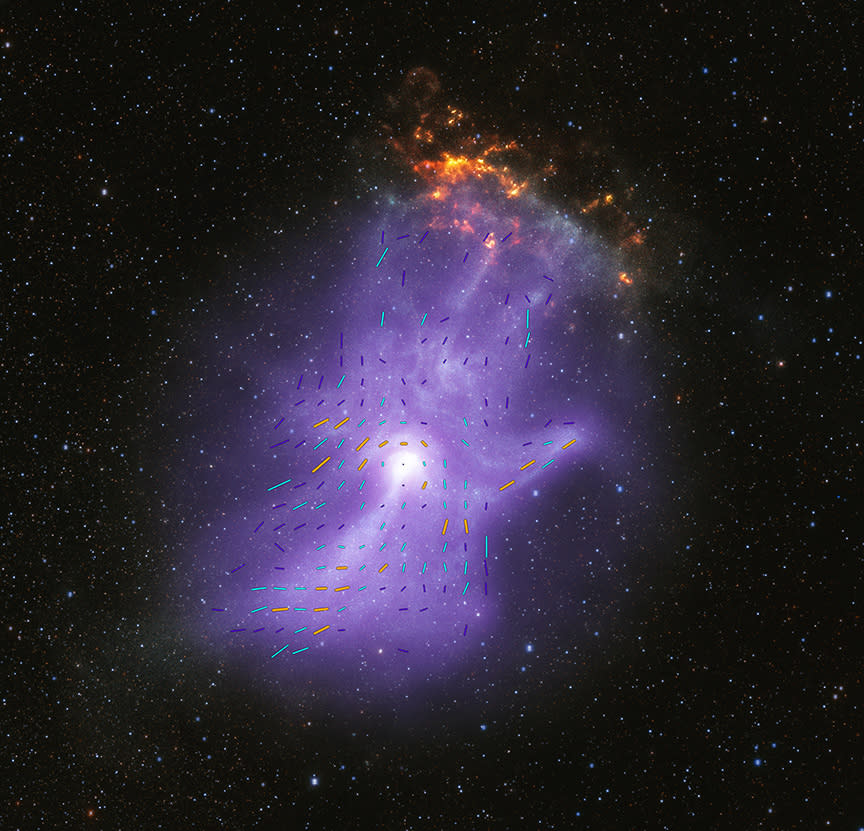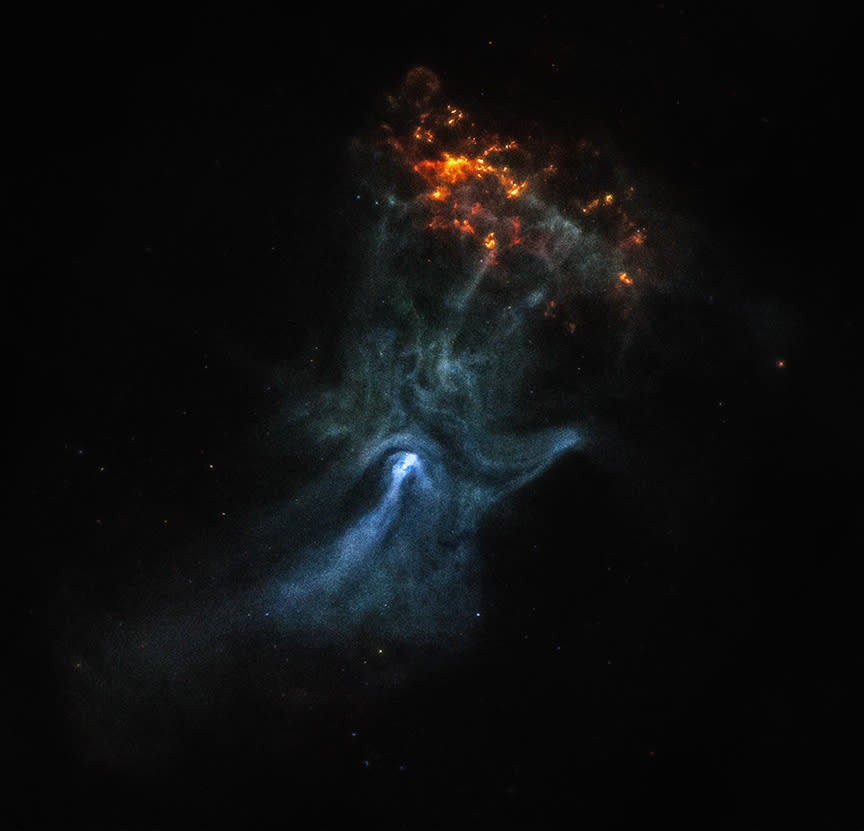NASA’s newest X-ray space telescope has captured a ghostly view of a stellar explosion whose remains resemble a skeleton hand in deep space — and just in time for Halloween.
The “ghostly hand” — formally known as MSH 15-52 — was created by the the death of a massive star. This catastrophic event, called a supernova explosion, left behind a fast-spinning, superdense stellar corpse known as a pulsar.
Pulsars are rotating neutron stars that have strong magnetic fields, which create powerful jets of charged particles and intense wind that forms what is known as a pulsar wind nebula. The pulsar PSR B1509-58 is located near the center of the image — or the base of the palm of MSH 15-52 — and injects particles into space, creating a glowing shape that resembles a human hand, according to a statement from NASA.
Related: James Webb Space Telescope dives deep into the Crab Nebula supernova wreckage (video)

Using NASA’s Imaging X-ray Polarimetry Explorer (IXPE), which launched in December 2021, scientists observed MSH 15-52 for about 17 days, revealing new details about the pulsar’s magnetic field and the orientation of its X-ray jets, also known as X-ray polarization.
“The IXPE data gives us the first map of the magnetic field in the ‘hand’,” Roger Romani, lead author of the study from Stanford University in California, said in the statement. “The charged particles producing the X-rays travel along the magnetic field, determining the basic shape of the nebula, like the bones do in a person’s hand.”


The space telescope showed that the amount of polarization is remarkably high in large regions of MSH 15-52, suggesting there is little turbulence in those regions of the pulsar wind nebula. This creates straight and uniform magnetic field lines (seen in the fingers and thumb), whereas complex, turbulent regions give particles an “energy boost,” which can be seen in the distinct, bright X-ray jet near the “wrist” of the hand-shaped structure, according to the statement.
Read more: Spooky space: 11 haunting images of our cosmos


RELATED STORIES:
— James Webb Space Telescope offers a mesmerizing look at the Ring Nebula (photos)
— Lagoon Nebula shines in gorgeous new Hubble image
— Carina Nebula twinkles in gorgeous new view from Hubble (photo)
“We’ve uncovered the life history of super energetic matter and antimatter particles around the pulsar,” Niccolò Di Lalla, co-author of the study, said in the statement. “This teaches us about how pulsars can act as particle accelerators.”
MSH 15-52, which is located 16,000 light-years from Earth, was first observed by NASA’s Chandra X-ray Observatory in 2001.
The recent findings using the IXPE data were published Oct. 23 in The Astrophysical Journal.

Dr. Sarah Adams is a scientist and science communicator who makes complex topics accessible to all. Her articles explore breakthroughs in various scientific disciplines, from space exploration to cutting-edge research.








